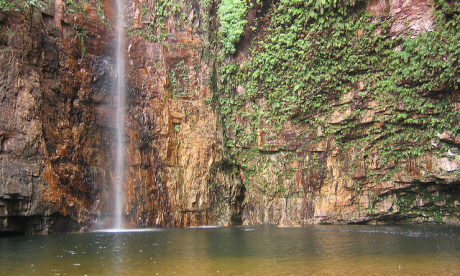
Matthew Brace tells you where to go and what to do in Australia's final frontier
The Kimberley is one of the least-explored parts of Australia: its last frontier. Here, the land is scattered and scarred with deep ravines, bizarre rock formations, giant bluffs, diamond mines and cool waterholes – Australia’s answer to the Wild West of cowboy movies, but minus the crowds, and plus a fabulous range of Western Australian cabernet sauvignons.
From October to March, the vast and remote Kimberley suffers an inhumane climate with searing days over 40°C and intense humidity. During this wet season, the primeval landscape is shaken by the Lightning Man, a crazed Aboriginal spirit who streaks across the sky, clashing together great axes, causing forks of lightning to leap from the clouds. The thunder thumps hard into your chest and sends your neck hairs bristling to attention. Even the bravest Aboriginal hunters dip their heads.
However, during the dry season – from April to September – the Kimberley is transformed into a gentler, rust-red land of warm, cloudless days and mild nights under a vast, glittering sky of stars. The roads re-open, the creeks flow and the place is a cavalcade of wildlife.
I was amazed by the wealth of life: purple and white lilies carpeted the surface of the billabongs, snow-white egrets glided noiselessly overhead, crocodiles peeked through the reeds and, out on the grassy plains, pairs of brolga birds danced in the dust.
This is a land of living colour: ores formed deep within the earth stain the slabs of sandstone ochre, claret and salmon pink; the gorges are decorated with olive-green eucalyptus trees and smoke-grey bushes; and, in season, many plants are on fire with flowers.
I wanted the real deal on my visit to Australia – I wanted space and wildlife and a sense of being a pioneer – so I chose the even-less-visited East Kimberley region. It did not disappoint.
Starting in Kununurra, an hour’s flight east of Broome or south-west from Darwin, the route covers roughly 320km by 4WD, then twice that again by light plane. From Kununurra, take a day’s jaunt by light plane to the Argyle Diamond Mine and the Bungle Bungle rock formations, then head west to the one-million-acre El Questro Wilderness Park, and north to the remote Mount Cockburn Range. After ‘going bush’ for two days, journey back to Emma Gorge for excellent tucker and a glass or two of red. Along the way there are superb natural wonders, wildlife in abundance and mystical Aboriginal rock art.
This true-blue outback town grew from a pit-stop on the long slog between Darwin and Broome to the centre of a pioneering irrigation scheme and a base for employees of the Argyle Diamond Mine. It now has a burgeoning melon export trade and a blossoming art scene, with several galleries. Two musts are the outdoor cinema, where you can watch movies under a sparkling sky, and a meal at the Stars in the Kimberley restaurant on Papuana Street.
These are the two main centres in the El Questro Wilderness Park (see Mount Cockburn Safari for contacts). Emma Gorge has a lovely swimming pool and elegant dining, while the Township Station is more casual, with campfire singing at the Swinging Arm Bar.
Emma Gorge An hour’s leisurely but rocky bushwalk will lead you from the campsite up the gorge to a cool waterhole and a perpetual waterfall. The Colonel, one of the local rangers, can answer wildlife questions but the Aboriginal legends remain locked away in the ancient strata of the rocks. The wild Kimberley is not where you’d expect to find fine cuisine but Emma Gorge has a superb chef and freshly caught barramundi – the favourite fish of outback Australia.
The Homestead If you have a few hundred pounds to spend, book a room at The Homestead, El Questro’s premier accommodation, perched on a cliff on a bend in the river. If not, then ask for a quick tour. It is only a few minutes’ drive from Township Station via some dry riverbeds full of white-barked ghost gums. Or hitch a ride in the Station’s chopper.
Perfect for going wild in style – a 4WD will take you beyond the Mount Cockburn Range to the Lodge – a hamlet of cabins with views over the Pentecost River. Crocs guaranteed .
Mount Cockburn Range Move over Monument Valley – this is Australia’s equivalent Wild West film set. It is just as big and just as impressive, only with fewer tourists. The 100m-high sandstone cliffs form a rust-red escarpment folding into canyons and faults in the rock, and resembling a giant, velvet cinema curtain. Standing here in the shade of a boab tree with silence all around you redefines the term ‘remote’.
Parry’s Lagoon The lowest point for miles around and the last place to retain water at the end of the dry season. All the birds from the vast flood plain flock to this last drinking hole and, by early September, it is a naturalist’s dream. A shaded, croc-proof walkway reaches out over the water from where you (and not the crocs) can snap happy for hours.